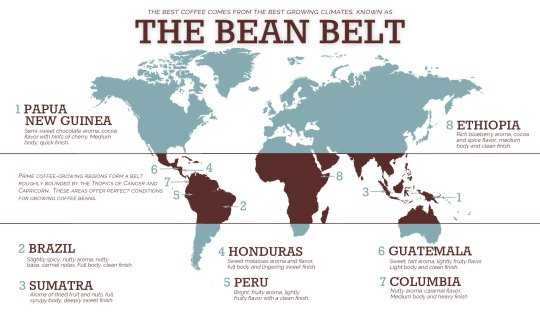As temperatures rise and weather patterns become more erratic around the world, coffee production is beginning to decline.
By the mid-21st century, coffee production could be halved, with some countries entirely losing their ability to grow the plant, according to a new report by the Climate Institute.
Some years could see catastrophic dips in coffee levels. Wild varieties of the plant, meanwhile, could disappear altogether, reducing the complexity and flavor of the coffee available for purchase.
“Consumers are likely to face supply shortages, impacts on flavor and aromas, and rising prices,” said John Connor, CEO of The Climate Institute, in a press release.
It’s a possibility that has sent major coffee brands reeling to find solutions and safeguards. Billions of dollars in revenue are on the line.
“We have a cloud hovering over our head,” said Mario Cerutti from Lavazza told a conference in 2015. “It’s dramatically serious. Climate change can have a significant adverse effect in the short term. It’s no longer about the future; it’s the present.”
For the 120 million people in low-income countries who depend on coffee production for their livelihoods, the prospect is far more dire.
Coffee is grown in more than 50 countries and is the second most traded commodity in the world after oil. 120 million people in low-income countries make their livelihoods through coffee production.
Globally, more than 2.25 billion cups of coffee are consumed every day.
Making sure coffee stays viable is, to the say the least, something a lot of people are counting on.
Like all plants, coffee grows best in certain conditions: high altitude, rich soil, moderate temperature, shady areas.
Coffee primarily thrives in “The Bean Belt,” an area that stretches across the equator.
Many countries in this zone are being pummelled by climate change. And many of these countries are unable to fully cope with the environmental changes.
Rising temperatures mean that coffee plants can become heat-stressed and the life spans of pests who eat the beans become longer.
In Tanzania, gradually rising temperatures have reduced coffee yields by 50 percent since 1960.
Extreme rain or drought, two common effects of climate change, further threaten coffee plants.
In 2014, Brazil, the largest producer of Arabica beans, was hit by a catastrophic drought that threatened much of the country’s yield.
Then there’s the spread of fatal diseases such as Coffee Rust, which, for example, ruined up to 85% of the crops for some producers in Guatemala in 2012.
Small-scale farmers handle the majority of coffee production in the world. Most of them, however, are financially unable to adapt to climate change, which requires moving crops to more hospitable areas, planting more resilient strains of coffee or diversifying crops.
Most farmers do not have the sitting capital to make these investments and wait for new plants to mature.
But with support from international players, this transition could become viable. Many big brands have committed to helping out and making the necessary investments.
The good news is that consumers can actively play a role in supporting this shift by buying brands that benefit small farmers.
Here’s a list of some of the labels you should keep an eye out for.
If drinking a cup of coffee is a part of your morning ritual, then you can probably join in the effort to save this vital plant.


















